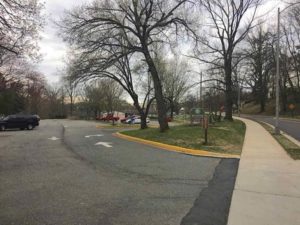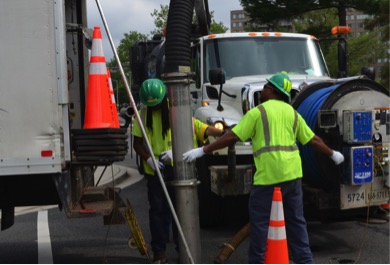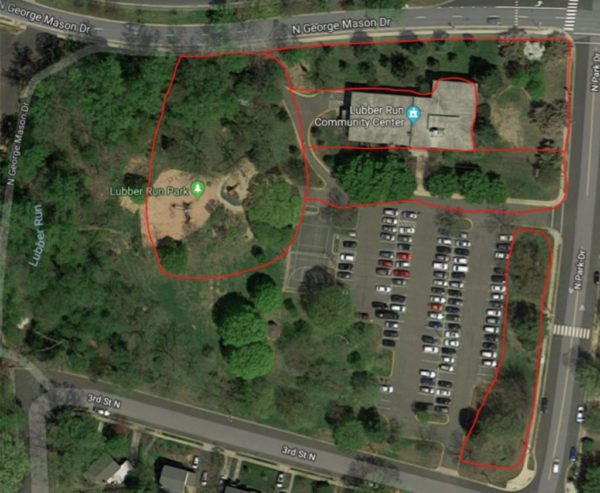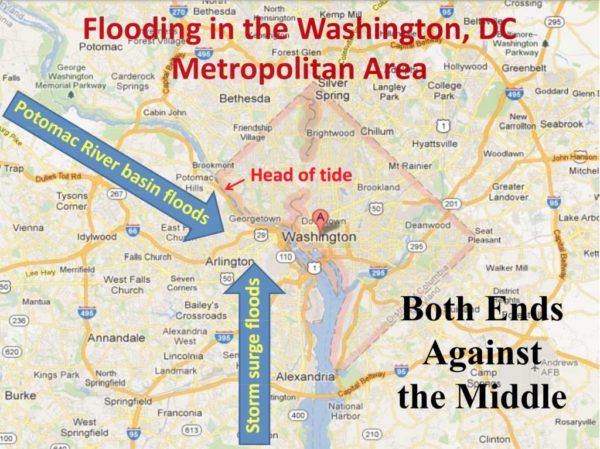 Peter’s Take is a weekly opinion column. The views and opinions expressed in this column are those of the author and do not necessarily reflect the views of ARLnow.com.
Peter’s Take is a weekly opinion column. The views and opinions expressed in this column are those of the author and do not necessarily reflect the views of ARLnow.com.
On October 16, ARLnow reported on the Department of Parks and Recreation’s (DPR’s) proposed project at Bluemont Park (601 N. Manchester Street).
In the article, the county explained more about the renovations, writing that:
“The goal of this Parks Maintenance Capital project is to replace the tennis court complex, lighting, restroom/storage, shelter, parking lot, site circulation, section of Four Mile Run Trail, site furnishing, drainage and landscaping in the Upper Bluemont area.”
The County has scheduled a meeting on Tuesday, October 29, 7-8:30 p.m., at Ashlawn Elementary School (5950 8th Road North) to enable the public to comment on DPR’s current plans for Bluemont Park upgrades.
Some DPR park upgrade proposals make sense and should be pursued.
As Boulevard Manor Civic Association President Chris Tighe noted in a comment to the ARLnow.com story:
“The [tennis] courts are indeed in bad shape due to large cracks, water damage, and unlevel playing surface. […] The gazebo structure is also in dire need of rehabilitation.”
DPR should be commended for planning and responding appropriately to maintenance concerns like these.
According to a County Bluemont survey, most respondents asked for upkeep, lighting and benches.
The survey drew around 350 responses when it asked for suggestions on what should be changed in the park. The majority of responses asked the County to:
- Preserve and plant more trees
- Resurface the tennis courts to fix cracks and improve drainage
- Improve lighting, and add more light poles near the baseball diamond
- Install more benches at the tennis courts and elsewhere
- Better maintain the restrooms and water fountains by the picnic shelter
The current parking lot does not need to be replaced
 Other proposed DPR “upgrades” are overkill and should be cancelled; the money saved should be redirected to higher priority, better uses.
Other proposed DPR “upgrades” are overkill and should be cancelled; the money saved should be redirected to higher priority, better uses.
Contrary to DPR’s current plans, the existing parking lot at Bluemont Park simply needs resurfacing, and it would be a waste of our tax dollars to replace it entirely.
As the image to the left illustrates, the parking lot is level and the existing pavement is in reasonably good shape.
Also, County policy has consistently reduced off-street parking requirements and emphasized shared parking arrangements.
The existing tennis-court footprint doesn’t need expansion
The needed tennis-court repairs should be made within the existing tennis-court footprint; the site is already built out, and the existing footprint should not be expanded.
The recently completed Public Spaces Master Plan documents a substantial surplus of tennis courts in Arlington. In our severely land-constrained County, it makes no sense to waste our scarce bond capacity and limited tax dollars to expand the tennis courts in flood-prone Bluemont Park.








